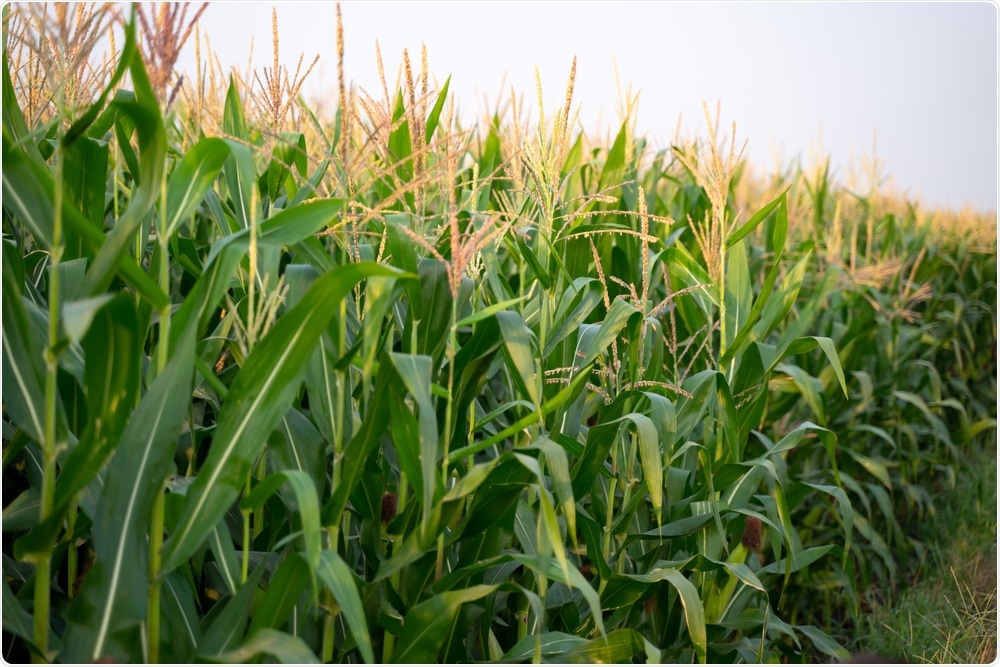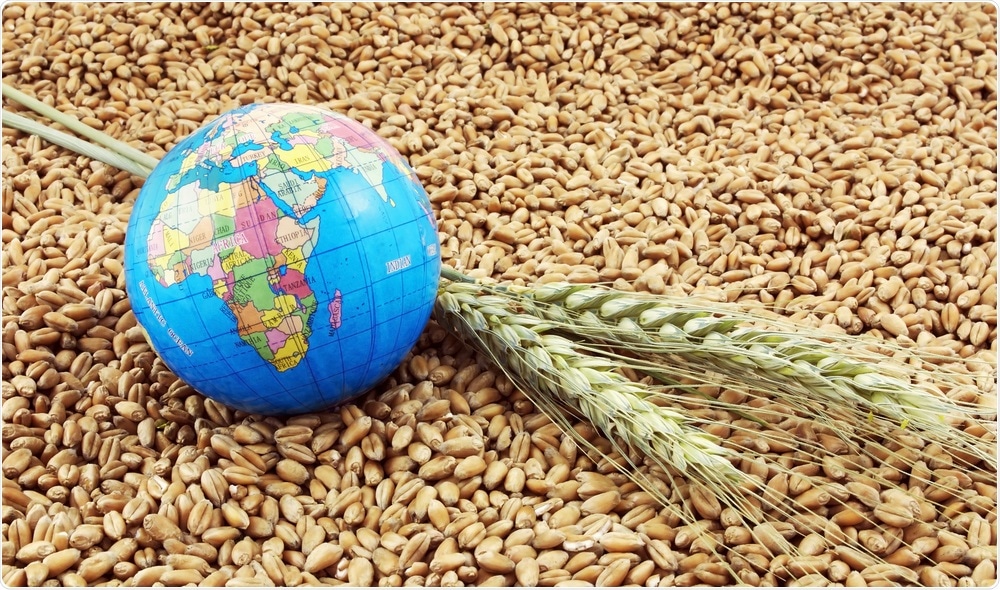Produced in Partnership with NASANov 25 2021
In this interview, we speak to Dr. Jonas Jägermeyr, a climate change scientist and crop modeler at the NASA Goddard Institute for Space Studies, about his latest research into climate change and how it is affecting global agriculture.
Please can you introduce yourself and tell us about your role at NASA's Goddard Institute for Space Studies (GISS)?
I am a crop modeler and climate change scientist at NASA GISS, Columbia University, and the Potsdam Institute for Climate Impacts Research.
I co-lead the Global Gridded Crop Model Intercomparison (GGCMI), a project that brings together world-leading crop modeling teams and we harmonize the models so that they use the same inputs, same management assumptions, and similar parameterizations as each other. This way we create a multi-model ensemble of climate-crop model projections for future crop yields – in fact, the largest archive of such projections as of today – which allows us to reduce uncertainty and increase confidence in our results.
GGCMI is an effort within AgMIP, a much larger effort of 1000+ scientists ranging from global modeling experts to regional and local stakeholders and farmers all concerned with the question of how to attain a more resilient global food system.
Agriculture is the World’s largest industry generating over $1.3 trillion in food each year. What are some of the biggest problems currently faced by the agricultural industry?
A third of global greenhouse gas emissions are from the food system. Agriculture is also facing a new climate reality. Almost all of the currently cultivated land will see fundamental changes due to climate change. Some of these changes are positive, a lot are negative, but almost all systems will need to adapt to the changing climate.
Finally, inequality, poverty, and food security, or broader 'malnutrition', is still a huge global concern that is at the core of the SDG agenda, with agriculture right at the heart of it. Unfortunately, climate change impacts will disproportionately affect the poorest communities in low-latitude tropical regions which will exacerbate exisiting inequalities and differences in food security and livelihoods.
Climate Change Could Affect Global Agriculture Within 10 Years
In your latest research you looked at climate change and its role within agriculture. How is climate change impacting global agriculture?
There are several factors affecting crop growth under a changing climate. Temperature and precipitation patterns will determine crop growth conditions in an obvious way, shifts in precipitation patterns might benefit one region while another one will be facing more frequent and more severe droughts.
Temperature affects crops in multiple ways; very high temperatures can damage the crop tissue directly, especially if concurring with drought conditions, but more importantly, higher temperatures will lead to faster phenological development of the crops. This means phenological stages such as flowering and maturity will be reached faster in a warmer world, leaving less time for critical growth stages such as the grain-filling period. So faster maturity usually means lower crop yields.
The last main factor affecting crop growth is the atmospheric CO2 concentration. Plant growth benefits from higher CO2 levels, increasing the water use efficiency, so these effects are especially important in dryland farming and for specific crops. Maize for example does not have the same capacity to benefit from higher CO2 as wheat does and is thus expected to show much higher losses due to climate change.
Can you describe how you carried out your latest research and what you discovered?
As described in the first question, we invited the worldwide leading crop modeling teams to participate in this new reference study. In the end, 12 independent process-based crop models followed a standardized simulation and calibration protocol, standardized set of input data, etc. For each crop, we ran 240 global climate–crop model realizations. This archive of future crop yield projections has informed the upcoming IPCC WG2 report, and there will be many follow-on publications using this data.
This first paper has several main findings. 1) the spatial extent of impacts is so widespread that almost all cultivated areas are expected to see changes under a business-as-usual emission pathway. This highlights the critical role of adaptation measures to avert the worst impacts and to realize potential gains. 2) the new generation of climate crop models are much more sensitive and realistic than previous versions and projected climate change impacts are much more pronounced than under CMIP5-based simulations. This means losses for maize are dramatically steeper and the simulations show higher gains for wheat. 3) We establish the ‘time of emergence’ metric in the climate impact community. The time of climate impact emergence (TCIE) is the year in which the mean signal leaves the range of historical conditions. We find that emergence of the climate signal occurs consistently earlier for all crops and world regions compared to using older simulations for the same calculations.

Image Credit: TEEREXZ/Shutterstock.com
Why are maize crop yields projected to decline 24% but wheat could potentially see growth over 15%? How do temperature, rainfall, and atmospheric carbon dioxide affect these crops differently?
In addition to what was said above, maize and wheat are grown in largely different world regions. Maize is grown across a wider range of latitudes including tropical and sub-tropical zones in which additional warming can push crops closer or beyond critical temperature thresholds and thus has the largest negative effects.
Wheat on the other hand is generally grown at higher latitudes where additional warming is less harmful and can even be beneficial in current temperature-limited regions. In addition to that, as mentioned above, wheat has a much higher capacity to benefit from the CO2 fertilization effect.
You stated that “A 20% decrease from current production levels could have severe implications worldwide.” What are some of these implications?
A greater than 20% reduction in global maize productivity is an unprecedented decline and without targeted adaptation measures to buffer, it would lead to significant disruptions of the global food system. In developed countries, maize is mostly used for livestock feed and biofuel production, so these sectors would be faced with price spikes, trade disruptions, and eventually availability issues.
Most importantly, however, maize is an important food crop for small-holder farmers operating often in a self-sufficiency manner. The disproportionate climate change hits these regions the hardest and will have direct repercussions for the livelihood of already disadvantaged communities which will directly translate into food security concerns.
How have advancements in technology, including model simulations, improved research efforts within agriculture? How do you see this role changing over the next ten years?
There are substantial model and input improvements since the first of such a harmonized multi-model ensemble in 2014. Both the climate and crop models now have a higher temperature sensitivity and are much more realistic.
The inputs have been improved as well, so for example, we developed a new global crop calendar product for this study, meaning that we digitized planting and harvest dates from various local sources that have not been available for the scientific community before, which allows us to better calibrate the crop models and to better represent local agricultural systems.
One of the biggest uncertainties in the field of long-term crop yield estimates is the role of CO2. CO2 is a very sensitive factor affecting crop growth in many ways, and while the models largely represent field experiments, there is still a wide range of CO2 fertilization effects across the models and it is unclear to what extent the modeled effect can actually be realized in the real world across larger scales. This will be the focus of future research further trimming down related uncertainties.

Image Credit: pgaborphotos/Shutterstock.com
Your research did not address economic incentives or the change in farming practices. What impact do you hope these factors will have on the future of agricultural yields?
In this study, we quantify the isolated climate change impact and deliberately keep management and farming practices constant over time. This is important to improve our understanding of the underlying systems and for climate change attribution.
However, there is a portfolio of management measures that will become paramount to buffer some of the most adverse impacts, but also help to exploit potential gains. These include shifted planting dates, using different and new cultivars, and maybe switching to a different crop altogether. But implementing supplemental irrigation and other soil and water management options will also become increasingly important.
What more can governments, policymakers, and organizations be doing to ensure the global security of these crops?
Global agriculture is facing a new climate reality. Given the results of this study, targeted and widespread implementation of adaptation measures as outlined above will be the cornerstone in maintaining and improving the resilience of the global food system. This needs to be based on informed policy support and regionally tailored incentives.
What are the next steps for you and your research into the effects of climate change on agriculture?
In a follow-up study, we will focus on quantifying the future role of extreme weather events in more detail, but also on better understanding different farm-level adaptation measures.
At the same time, we keep expanding our data set of observational planting and harvest dates around the world that will eventually allow us to study if, and where, farmers are already starting to adapt to new climate reality.
Where can readers find more information?
I have an active Twitter feed with the handle @JonasJaegermeyr where I tweet about related updates. My homepage can be accessed at https://ccsr.columbia.edu/people/jonas-jagermeyr and finally, www.agmip.org provides general updates on our work and related fields.
You can also find a link to the paper here: https://www.nature.com/articles/s43016-021-00400 and https://doi.org/10.1038/s43016-021-00400-y).
About Dr. Jonas Jägermeyr
I am a climate change scientist and crop modeler. I study food systems and global food security at the NASA Goddard Institute for Space Studies, The Earth Institute at Columbia University, and the Potsdam Institute for Climate Impact Research (PIK).
As a central initiative within AgMIP, I co-lead AgGRID and the Global Gridded Crop Model Intercomparison (GGCMI), and I am the coordinator of the agriculture sector in ISIMIP, a cross-sectoral model intercomparison project.